It’s been a bit warmer down here this week but any gain in bringing things on quicker has been offset by wind and rain. My garden is pretty open and strong wind is never welcome. Earlier in the week I had enough Camellias looking good to be motivated to write a piece about them on my other blog. They’re not looking so good now.
The focus of my anxiety has shifted from worrying about what has survived the winter, to what in new growth is vulnerable to an unexpected frost. Except for Salvias and Dahlias I now pretty much know what I’ve lost and I’m thinking about how to fill the spaces.
Things are growing away, perhaps not yet to the point of being showcased, but I’m always happy to see brown gradually turning green. Which are to be my six chosen ones, that is the question that I and many others are asking. If you’re ready with an answer, we’re ready to hear it. Join in; if it’s not clear to you how, check out the guide here.
One.
Top of today’s pile is my Magnolia ‘Vulcan’. It has opened a few flowers and they have been looking good from a distance, especially in sun and against a dark and brooding sky. Strong wind and Magnolia flowers are not a good combination though, so it’s best not to look too closely.
Two.
Podophyllum ‘Spotty Dotty’ always has something of the night about it, never more so than when it first emerges in spring. It’s very easy to imagine that its roots are feeding on something dead below the surface.

Three.
Pachyphragma macrophyllum is perhaps not the most spectacular of plants but does its thing proficiently enough in conditions of shade and dry that very few more refined or showy plants couldn’t cope with. Too bad it got saddled with such a terrible name. It seeds very freely so dead heading and a watchful eye are part of its regime.
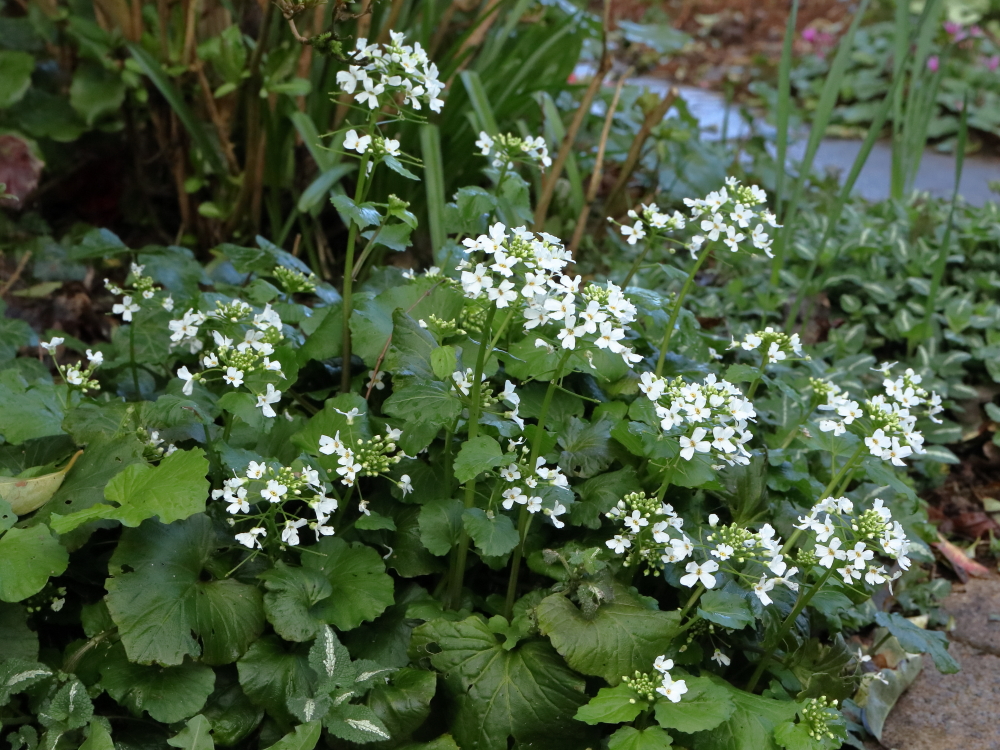
Four.
I visited a sizeable Camellia collection last week and the owner was telling me he’d had some success with air layering using made for the purpose plastic balls. My recent success rate with cuttings is zero so I thought I’d give them a try. Four have been deployed so far. I don’t expect anything to happen quickly, so maybe in the autumn I’ll be telling you how good, or how useless, they have been. I have another sixteen; I’m planning to try them on Camellias in the National Collection.
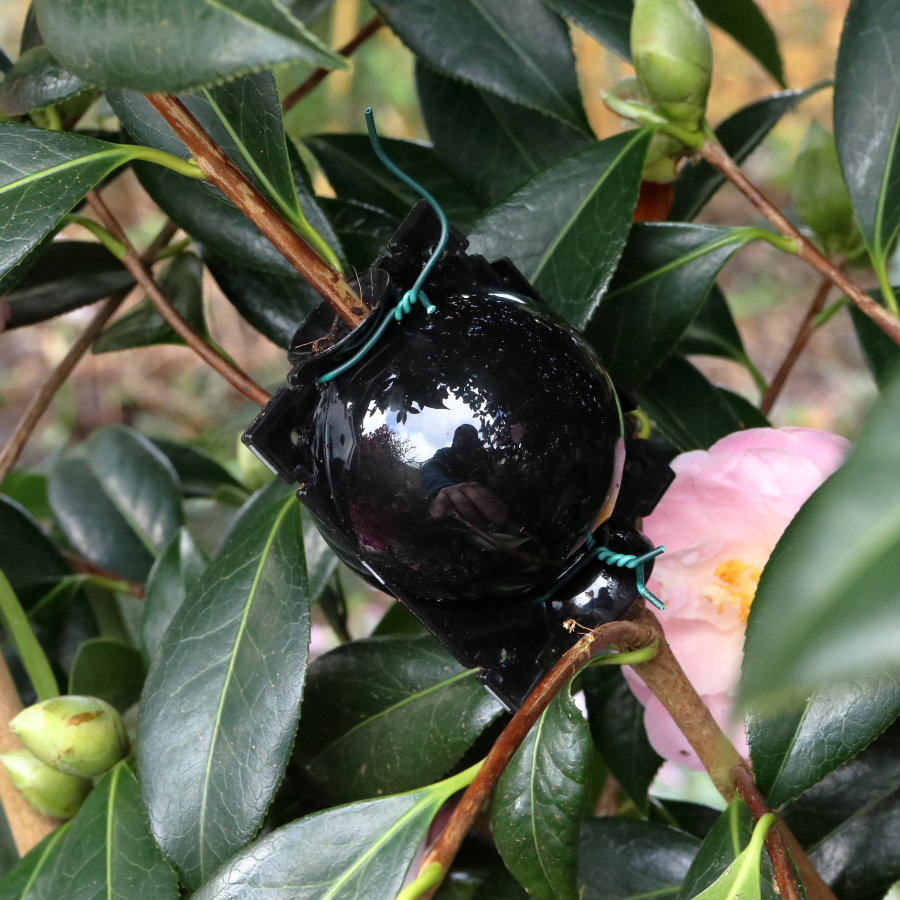
Five.
Every year I have good intentions regarding cutting down my Epimedium pinnatum colchicum. Every year I have to shelve those good intentions when dashes of yellow appear and cutting away the old leaves without damaging the flowers is all but impossible. Then the old leaves start to look tatty and I end up working around the ultra brittle new ones instead of the flowers.
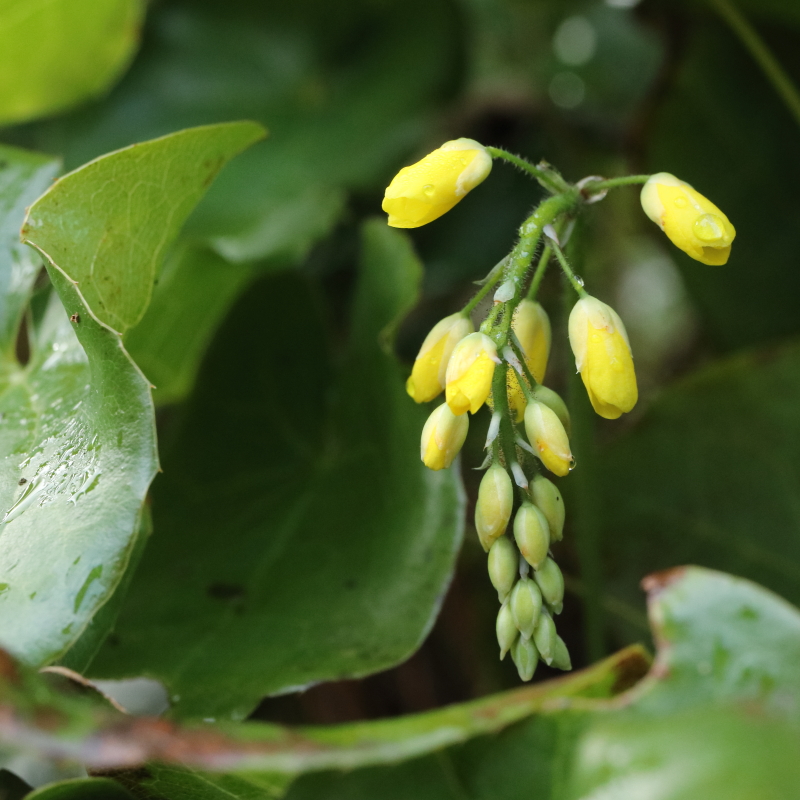
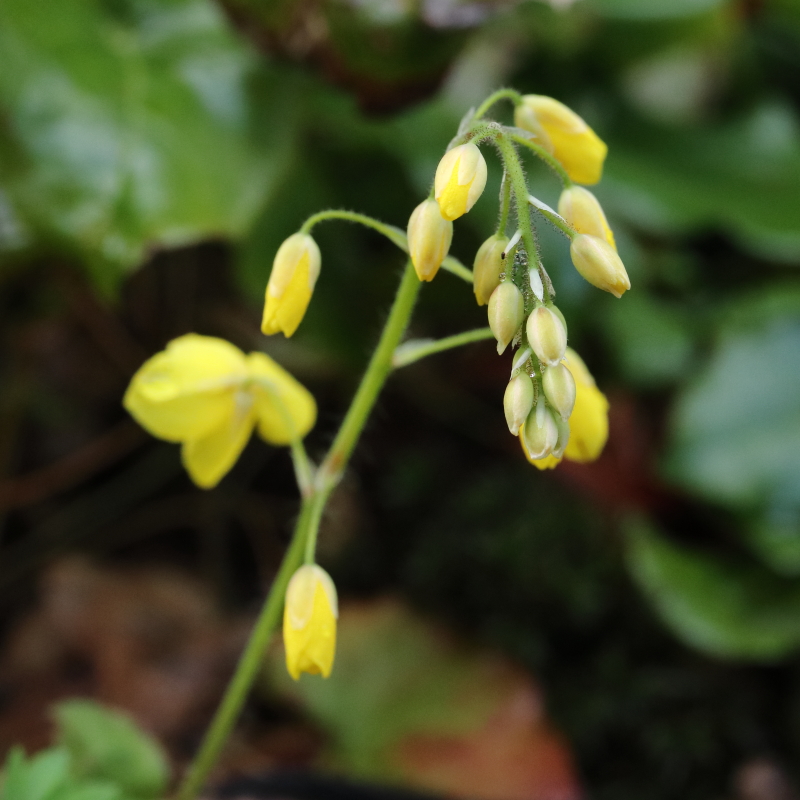
Six.
More emergent leaves to finish on. Begonia pedatifida ‘Apalala’ was in my six three weeks ago but it wasn’t clear then how much frost damage it had suffered, having pushed through its leaf covering just in time to get clobbered. Not so much, it now appears. I am getting to seriously love this plant, so much chutzpah from nothing but mid green leaves. Expect it to appear regularly in these posts.
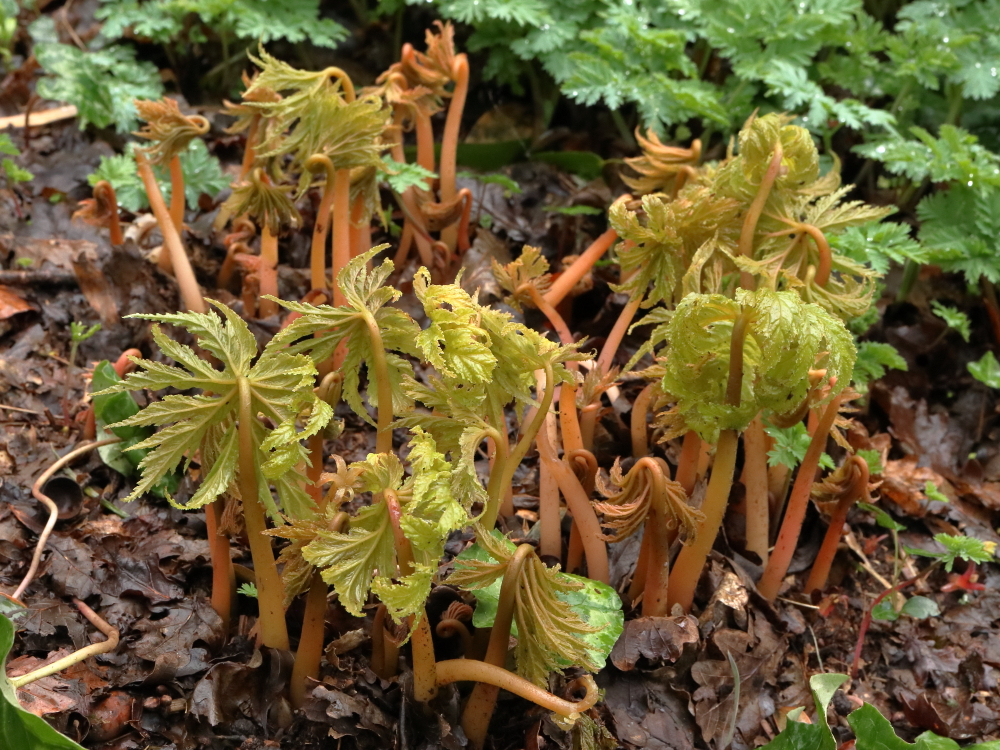
Emerging fern fronds, breaking buds on the apple tree, the first bluebells, carpets of primroses and Scillas; these are the things that didn’t make the cut. There’s always next week.
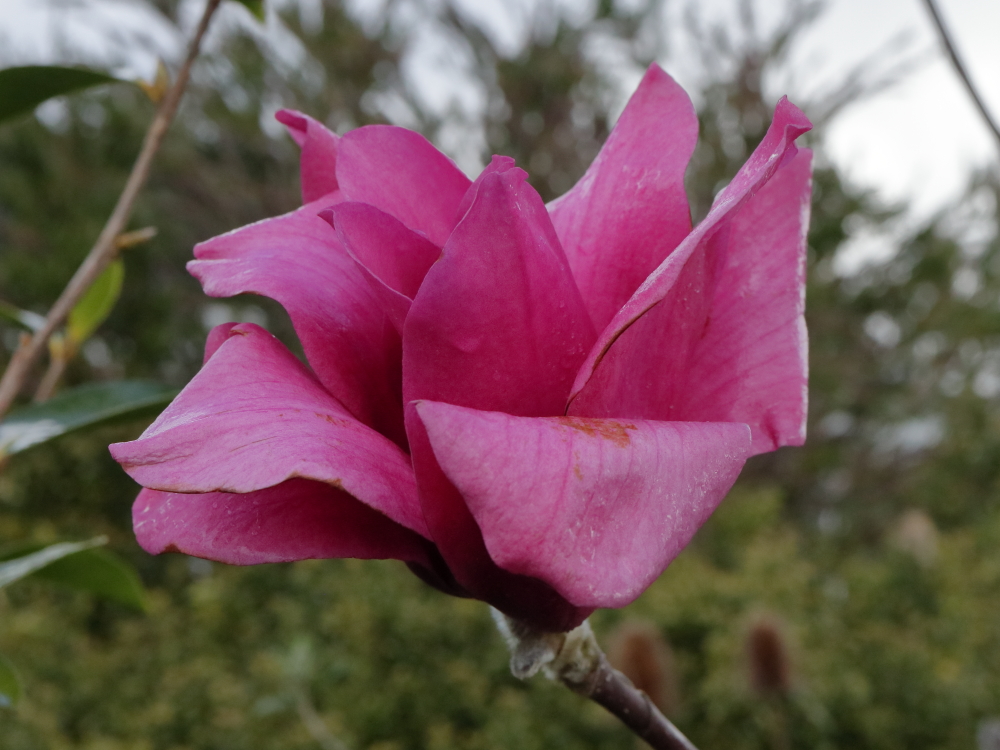

Oh, sorry about the frost damage. It looks like spring is really coming on in your garden, though. I always consider Magnolia bloom time a definite spring entrance sign. Once my garden starts blooming, I’ll try to join in on the meme.
LikeLiked by 1 person
It would be lovely to have you join in, the more the merrier.
LikeLike
Good luck with your air layering! I saw it done once on TV with them saying it was really easy ha ha!
Here are my six :
https://rosegardenconversation.wordpress.com/2023/03/25/six-on-saturday-autumn-glory/
LikeLike
In the sense that I’ve just stripped off a bit of bark then put the gizmo on the stem, it was really easy. The question is, will it work? If it does then it’s really easy, if it doesn’t, it’s really hard, but I did the same thing either way?
LikeLike
You have been assessing frost damage too… 🙄 Those balls for air layering look as if they should be effective, and I will be interested to read later how you get on. I am chuffed that I cut my epimedium leaves before Christmas this last year, having left it far too late the previous year. You may be interested to know that my Corydalis George Baker has made a reappearance – I haven’t seen it for a couple of years at least!!
LikeLike
The Corydalis ‘Beth Evans’ from a couple of weeks ago has slug trails all over it, in the dry greenhouse. The plants of C. solida outside don’t, which is pretty odd. Think she’s going to get kicked out.
LikeLike
That Podophyllum ‘Spotty Dotty’ looks rather like a fungus, lovely photo, wow. Here’s what’s happening in north east Fife:
http://www.balmerino.net/geekygarden
LikeLike
I find a reason to giggle here once a week. “It’s very easy to imagine that its roots are feeding on something dead below the surface.”
LikeLiked by 1 person
It’s a terrible name, to be sure. Maybe just call it ‘not the most spectacular of plants but does its thing proficiently enough’? On other hand you’re very good at terrible names, Jim.
Here’s my summary:
LikeLiked by 1 person
https://thethreehairs.com/2023/03/25/six-on-saturday-march-week-4/
LikeLike
‘Spotty Dotty’ looks so alien! Like a swamp creature. Having made the mistake of having to cut old epimedium leaves down when new ones are appearing, I now cut them to the ground in February. I was a little worried that I had done it too early, but new leaves and flowers are growing now. The flowers are so difficult to photograph though. Thankfully the wind seems to have died down today. Yesterday was horrendous! But dry until the evening so I could get some blurry flowers.
LikeLike
I wish I had some shade that stayed damp in the summer, I’d love to have ‘Spotty Dotty’ in the garden. Sadly, my Begonias don’t seem to have survived the winter, even in the glasshouse. I’m crossing my fingers for B. luxurians
https://thequiltinggardener.wordpress.com/2023/03/25/six-on-saturday-25-03-23/
LikeLike
Love that Pachyphragma. Always looking for shade plants.
It is definitely spring this week in the American South. Here are my six for this week.
https://mensgardenvestavia.wordpress.com/2023/03/24/its-finally-spring-24-may-2023/
Happy gardening!
LikeLike
They may not be part of your chosen 6 this week, but those primroses in your banner photo definitely caught my eye! How perfectly lovely! Here are my six: https://cosmosandcleome.wordpress.com/2023/03/25/six-on-saturday-march-25-2023/
LikeLike
Lovely see the gardens unfolding. I finally caught Covid this week so boo to that. Here’s my pics for this week. https://junegirvin.substack.com/p/the-week-in-covid?sd=pf
LikeLike
The weather just has not been nice to us, Jim. I hope that changes very soon. I *love* your Magnolia ‘Vulcan’. The way the flowers stand out in that distance shot is fantastic. And I’ve never seen a Podophyllum ‘Spotty Dotty’ before – wow! Super interesting looking (you know your a gardener when you get excited by seeing something new!).
Here’s my link:
LikeLike
Spotty dotty does look alien! Its one I keep thinking of adding to some shady areas here. Back on the list it goes. The air layering experiment is interesting. Looking forward to hearing how it progresses. Here’s my link https://n20gardener.com/2023/03/25/six-on-saturday-and-we-are-off/ my garden is responding that extra degree or two of warmth.
LikeLiked by 1 person
Ah Magnolias, gorgeous trees! I did manage to cut back my Epimediums a couple of weeks ago, E. Amber Queen will be flowering very soon, so I was just in time.
My six are here………https://www.leadupthegardenpath.com/
LikeLiked by 1 person
That Podophyllum is a weird looking dude! It’s like a slimy toadstool! Here are my less unusual Six! https://davidsgardendiary.com/2023/03/25/six-on-saturday-82/
LikeLiked by 1 person
It’s great to have to whittle down the short list after months of trying to put together a six. Those are lovely primroses you have in your header photo this week. I’ve had Podophyllum ‘Spotty dotty’ on my wish list for a while, but your description has made me have second thoughts [shivers].
Here’s my six for this week https://www.hortusbaileyana.co.uk/2023/03/all-pretty-flowers.html
LikeLiked by 1 person
I cannot believe you’d be so easily put off Spotty Dotty, it’s a great plant.
LikeLiked by 1 person
The Pachyphragma macrophyllum (I see what you mean about the name) looks lovely – quite similar to the white variety of Honesty I have, only shorter. I’ll be interested to hear how the air layering turns out https://onemanandhisgardentrowel.wordpress.com/2023/03/25/six-on-saturday-25-march-2023/
LikeLiked by 2 people
Pachyphragma is easy from seed, and you’ll only need to buy it once. It doesn’t just grow well in dry shade, it flowers well too.
LikeLiked by 1 person
Thanks for the reminder: as I am a few days behind you hopefully I shall get to cut the Epimedium leaves down tomorrow morning. Here are my six:https://noellemace.blogspot.com/2023/03/six-on-saturday-25-march-2023.html
LikeLiked by 2 people
Pretty colour of this magnolia ‘Vulcan’ which is often highlighted by Stervinou, one of our Breton nurseries that you know well.
Smart plastic ball for air layering. At the moment I’m trying that with my wisteria but I use the vulgar ziplock bag which works very well. Here is my Six: https://fredgardenerblog2.wordpress.com/2023/03/25/six-on-saturday-25-03-23/
LikeLiked by 2 people
The man who recommended the plastic balls had used plastic and it had been attacked by birds. Good nest material perhaps. I don’t think I’ve ever looked at Stervinou’s Magnolias, I have tunnel vision for Camellias. I’ll have a look.
LikeLiked by 1 person
https://www.stervinou.fr/fr/c7_magnolia.html
LikeLiked by 1 person
Nah! They’re just showing off. I hate them!
LikeLiked by 1 person
Here are my autumnal six (second attempt…)
https://thistlesandkiwis.org/2023/03/25/six-on-saturday-25-03-23/
LikeLiked by 2 people
It is lovely to see the gardens growing again and all the emerging beauty is quite exciting.
I hope that the winds die down for you.
Here is a link to my six – I will pop back later and visit everyone else.
LikeLiked by 2 people
Here are my autumnal six:
https://thistlesandkiwis.org/2023/03/25/six-on-saturday-25-03-23/
LikeLiked by 2 people
I got HELLEBORE to brag about, like everyone else! They have never been so happy here. They really enjoyed all this historically wintry weather. These pictures are a week old, but I really wanted to brag about them.
It is interesting that so many of the cultivars that are there are the same that we grow, not only the camellias, but also ‘Vulcan’ magnolia. I must have mentioned this earlier. We used to grow it.
LikeLiked by 3 people
Yes, I remember you ‘Vulcan’ now. I may have mentioned that ours might be a bit more brownish than yours because of the climate. Of course, I no longer grow it, although one happens to inhabit one of the landscapes here. Unlike most of the deciduous magnolias, ‘Vulcan wants to be more excurrent than decurrent. Because ours was shaded, some of the branches curved upward to develop a few vertical trunks a few feet over from where the primary trunk got shades out. The tree is healthy, but is not developing a good form.
LikeLiked by 1 person
Mine fell over, probably had a poor root system when planted. I cut it nearly to the ground and let a vertical sprout grow up again. Magnolias are as hard to kill as camellias.
LikeLiked by 1 person
Yes, I remember that. It was about the same time that I thought that we corrected ours, but did not.
LikeLike
Did you get ‘Vulcan’ in direct from New Zealand and have to adjust them to a six month season change?
LikeLiked by 1 person
Not this specimen. It is a single specimen that came from a local nursery. I do not know if it grew here or was imported. Those that we grew on the farm came from New Zealand, which did not work out well for us. They typically arrived during the warmest weather of the year, and were delayed for inspection in three different counties.
LikeLiked by 1 person
I got it horribly wrong the first time we did it. Put Osmocote into the compost, which in the heat dumped a lethal concentration which burned the roots as fast as they tried to grow. We got better at it in subsequent years but my Vulcan was a survivor of year one.
LikeLiked by 1 person
I knew it was a bad idea when we did it. I do not doubt the ability of other farms to cultivate deciduous plants that are deprived of half of their year, but we were unable to tend to them adequately.
LikeLike
My recollection was that on the first occasion we worked our way down through Magnolias, Acers and whatever, potting them as we went, then found a sheet of instructions at the bottom.
LikeLiked by 1 person
OH!
LikeLiked by 1 person